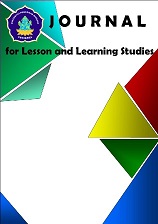Tri Pramana-Based Digital Learning Media: Enhancing Students’ Science Learning Outcomes in Elementary Schools
DOI:
https://doi.org/10.23887/jlls.v7i3.91408Kata Kunci:
Digital Learning Media, , Tri Pramana, Science Learning OutcomesAbstrak
The underlying issue of this research is the need for innovative and effective learning media to support science education in elementary schools. This study aims to develop Tri Pramana-based digital learning media for the science subject to enhance the quality of teaching and learning processes. The research employed a development method using the ADDIE model (Analyze, Design, Develop, Implement, Evaluate). The study involved 43 participants, including experts, teachers, and students. Data were analyzed qualitatively and quantitatively to assess the validity, practicality, and effectiveness of the developed learning media. The results showed that the Tri Pramana-oriented digital learning media has unique characteristics and was designed for Plants as a Source of Life on Earth topic, in 8 sessions, divided into two parts per session. The media validity was rated very high, with an average score of 0.98 (content), 0.94 (media), and 0.93 (language). The practicality of the media received an average score of 4.79 from teachers and 4.37 from students, both categorized as very practical. The effectiveness of the media, based on a trial involving 24 students, resulted in an average n-gain score of 0.68, categorized as moderate. Thus, the Tri Pramana-based digital learning media is deemed valid, practical, and moderately effective in supporting science education for elementary school students and has the potential for broader implementation.
Diterbitkan
Cara Mengutip
Terbitan
Bagian
Lisensi
Hak Cipta (c) 2024 I Made Ari Winangun

Artikel ini berlisensiCreative Commons Attribution-ShareAlike 4.0 International License.
Authors who publish with the Journal for Lesson and Learning Studies agree to the following terms:
- Authors retain copyright and grant the journal the right of first publication with the work simultaneously licensed under a Creative Commons Attribution License (CC BY-SA 4.0) that allows others to share the work with an acknowledgment of the work's authorship and initial publication in this journal.
- Authors are able to enter into separate, additional contractual arrangements for the non-exclusive distribution of the journal's published version of the work (e.g., post it to an institutional repository or publish it in a book), with an acknowledgment of its initial publication in this journal.
- Authors are permitted and encouraged to post their work online (e.g., in institutional repositories or on their website) prior to and during the submission process, as it can lead to productive exchanges, as well as earlier and greater citation of published work. (See The Effect of Open Access)




